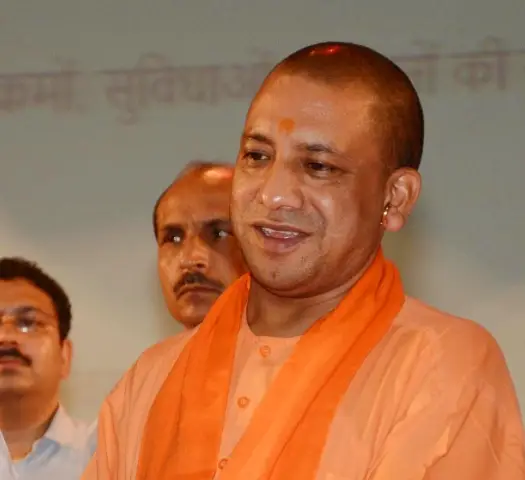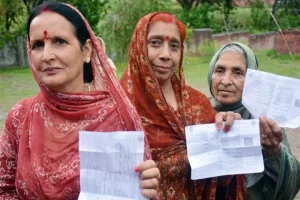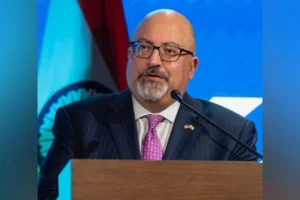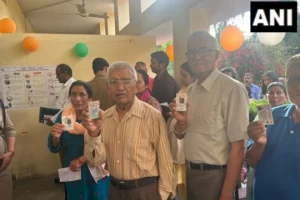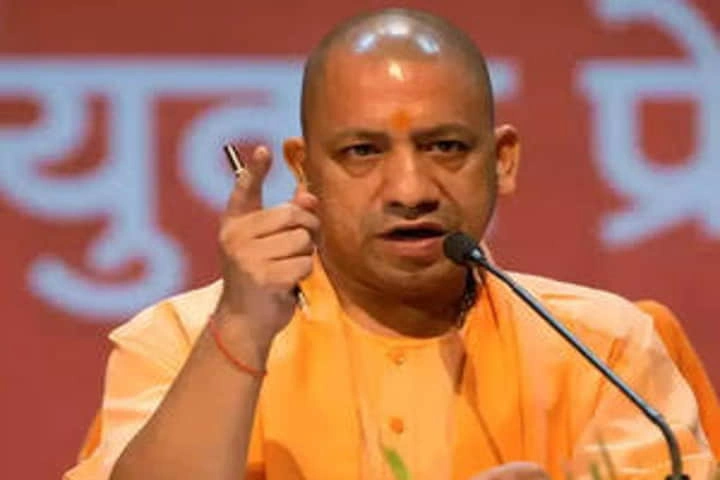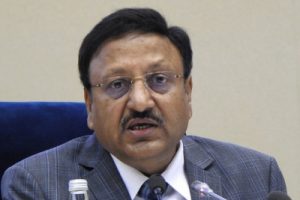Swati Verma and Yatika Agrawal
Infrastructure and connectivity are important parameters that decide the economic weight of any state. Infrastructure initiatives in productive capacity building by bridging connectivity gaps and reducing logistics costs, ensure seamless flow of goods and services.
Uttar Pradesh is positioning itself as a multi-modal logistics and transportation hub in northern India. The sheer number of infrastructure projects that have been recently completed and are on-going in the state is evidence of this fact. The diverse nature of infrastructure projects – a combination of road, rail, air and waterway initiatives – makes it more progressive.
In 2021, Prime Minister Narendra Modi announced plans to make Greater Noida in Uttar Pradesh a multi-modal logistics and transportation hub, by investing Rs 3,883.80 crores. It is a suburban district in western Uttar Pradesh and a part of the Delhi National Capital Region. It is a part of three infrastructural proposals worth Rs 7,725 crores for the setting-up of greenfield industrial cities with connectivity to major transportation corridors such as the eastern and western Dedicated Freight Corridors, Expressways and National Highways.
They, as proposed by the Department for Promotion of Industry & Internal Trade, Government of India, are part of the construction of various trunk infrastructure components for the Krishnapatnam Industrial Area in Andhra Pradesh, Tumakuru Industrial Area in Karnataka, and a Multi-modal Logistics Hub and Multi-modal Transport Hub at Greater Noida in Uttar Pradesh
Besides this, the construction of a greenfield airport at Jewar (Noida International Airport) is another key initiative to promote seamless connectivity from and with Uttar-Pradesh. It is believed that this airport will be the largest in India. Its first phase is expected to be completed in 2024 and will employ over 200,000 persons during its construction phase.
A Web of Expressways
Similarly, several road development projects are underway in Uttar Pradesh. According to data provided by the National Highways Authority of India, Uttar Pradesh has the longest stretch of roads and highways. There are 48 National Highways with a cumulative length of 5,599 kilometres, which pass through Uttar Pradesh. Moreover, Uttar Pradesh is connected to neighbouring countries such as Nepal through the Asian Highway 43 that passes through the Asian Highway 1 in Agra to Matara in Sri Lanka.
In this context, it is important to mention that in the recent past a 341-kilometres long six-lane Purvanchal Expressway with an investment of Rs 22,500 crores has been inaugurated, which is aimed to provide better road connectivity in eastern Uttar Pradesh. Industrial townships are also being planned along this expressway to provide jobs for the youth and market access for farmers, including their linkages with the One District, One Product (ODOP) initiative.
Along with such public investments, the State Government is working on several policy matters like the creation of land banks, promoting product-specific industrial parks, to attract private investment. Taken together, they helped the state in climbing the ladder of the Ease of Doing Business Index from 14th position in 2016 to 2nd position today.
Similarly, it is important to mention two other important expressways in Uttar Pradesh that are under construction. They are the Ganga Expressway and the Bundelkhand Expressway. The Ganga Expressway is a 594-kilometres long, 6-lane (expandable to eight) greenfield expressway with a total expected project value of Rs 37,350 crores, including land acquisition, that will connect the Bijauli village on NH-334 in Meerut district with the Judapur Dandu village on NH-19 in Prayagraj district in its Phase-1. It will pass through 12 districts of the state, namely (from west to east), Meerut, Hapur, Bulandshahr, Amroha, Sambhal, Budaun, Shahjahanpur, Hardoi, Unnao, Raebareli, Pratapgarh and Prayagraj.
Also read: Modi government planning surge in big fertiliser plants to achieve second green revolution
This project aims at ensuring high-speed connectivity between the Eastern and Western boundaries of the state. It is also planned to serve as a flood control embankment since floods are a major cause of agricultural and environmental damage in these areas and result in many deaths as well as the spread of diseases during India's monsoon season.
On the other hand, the Bundelkhand Expressway is a 296-kilometres long, 4-lane (expandable to six) access-controlled expressway with a total project value of Rs 14,716 crores that will connect the Gonda village on NH-35 in Chitrakoot district with the Kudrail village on Agra-Lucknow Expressway in Etawah district. It will pass through seven districts of the state (from north to south), which are Etawah, Auraiya, Jalaun, Hamirpur, Mahoba, Banda and Chitrakoot. It will boost tourism to Chitrakoot Dham. In total, four railway-over-bridges, 14 major bridges, 268 minor bridges, 18 flyovers, six toll plazas, seven ramp plazas and 214 underpasses will be constructed on this expressway..png)
Reviving Waterways
Moving from airways and roadways, Uttar Pradesh is increasingly focusing its energy on reviving waterborne transportation. The National Waterway 1 or the Ganga-Bhagirathi-Hooghly river system is the longest waterway in India. It runs from Prayaganj in Uttar Pradesh to Haldia in West Bengal via Patna and Bhagalpur in Bihar across the Ganga River.
Additionally, a multi-modal terminal at Varanasi of Rs 170 crores is set to emerge as a major logistics gateway connecting north India to the eastern and north-eastern states, extending up to Bangladesh. The ongoing construction of the Varanasi terminal that incorporates waterway, rail and road connectivity is part of the Government’s Rs 5,369 crores Jal Marg Vikas Project. The multi-modal hub with rail, road and waterways connectivity will take the state to a new growth trajectory. The Varanasi terminal, with 0.54 million tonnes per annum cargo handling capacity in Phase 1, will complement the Eastern Dedicated Freight Corridor project, enabling the movement of cargoes from Ludhiana in Punjab to Haldia in West Bengal and further to the east.
Dedicated Freight Corridors
Last but not least, Uttar Pradesh will serve as an important destination for the Dedicated Freight Corridor projects under the Ministry of Railways, Government of India. Both the Eastern Dedicated Freight Corridor (EDFC) and the Western Dedicated Freight Corridor (WDFC) pass through Uttar Pradesh. The EDFC is about 1,873 kilometres long, out of which 1,076 kilometres are in Uttar Pradesh, which is about 57 percent of its length. The EDFC starts from Ludhiana and then enters Uttar Pradesh through the Saharanpur district and exits at the Pandit Deen Dayal Upadhyay Station and is finally completed at Dankuni in West Bengal. It covers more than six stations in Uttar Pradesh. Similarly, the WDFC, which is 1,504 kilometres long, connects Dadri in Uttar Pradesh with the Jawaharlal Nehru Port in Navi Mumbai via Rewari in Haryana, and Palanpur, Vadodara, and Sachin (near Surat) in Gujarat.
Along with these connectivity initiatives and industrial development through the ODOP initiative, among others, the State Government is taking concrete steps in improving public transport, including through mass rapid urban and suburban transportation system (MRTS) in several cities and peri-urban areas. Ten big cities have the MRTS in place and some of them such as Lucknow, Kanpur, Agra are also operating electric buses. Moreover, MRTS projects have been announced for Bareilly, Moradabad, Aligarh, Prayagraj, Kashi, Meerut and Gorakhpur.
A Cobweb of Multi-modal Connectivity
Thus, the state of Uttar Pradesh is developing a number of multi-modal transport and transit facilities through infrastructural development. The cities of Uttar Pradesh are well-connected through a wide network of roadways and railways. The best mode for travel and transit is through trains due to the sheer number of stations (1136 stations) and inter-state trains (338) arriving daily in the state.
Also read: Kejriwal’s Anarchist Model : Buying political influence with freebies at the cost of exchequer
Several cities in Uttar Pradesh such as Allahabad and Varanasi are accessible through different modes of transportation such as National Waterways, National Highways, and EDFC. For instance, Ramnagar Multi-Modal Terminal (MMT) at Varanasi is connected by road with NH-7 and NH-2. Additionally, there is a proposal for extending the rail tracks from the Jeonathpur railway station to this MMT, which is just about 4-5 kilometres away from this terminal. Through this railway station, goods can reach Mughalsarai, which is a part of EDFC. Furthermore, this MMT has a 200-metres long jetty wherein two 60 metre vessels can be parked at a time.
Moreover, Uttar Pradesh’s proximity to our neighbouring countries, viz. Nepal, Bangladesh, Bhutan, can play a pivotal role for the state to become a major trade and economic hub for northern India with its spokes stretching to adjoining states. Multi-modal connectivity from and through Uttar Pradesh can promote mass-scale manufacturing and employment, along with the development of human capital.
Looking Forward
In short, Uttar Pradesh is ideally placed in the Indian sub-continent to act as a multi-modal connectivity hub. The sheer number of infrastructure as well as other connectivity initiatives in this state, along with necessary measures for industrialisation and logistics, makes it an attractive destination for investments. According to India’s Foreign Direct Investment Factsheet of September 2021, published by the Department for Promotion of Industry & Internal Trade, Government of India, it has been observed that from October 2019 to September 2021 Uttar Pradesh received Rs 5526.27 crores in foreign direct investment.
Uttar Pradesh and three of its adjoining states, viz. Bihar, Jharkhand, Madhya Pradesh, are least developed in India in terms of their per capita national state domestic product (Uttar Pradesh: Rs 74,141, Bihar: Rs 50,735, Jharkhand: Rs 87,127, Madhya Pradesh: Rs 113,079), whereas in case of India, it was Rs 134,430 in 2020. In this context, we have to remember that within the next few years Uttar Pradesh aspired to become a one trillion-dollar economy, which will help it to achieve a per capita income closer to our national average. For that to happen, mass manufacturing and logistics are necessary and multi-modal connectivity can trigger them.
(Swati Verma and Yatika Agrawal are Research Associates at CUTS International, a global public policy think- and action-tank on trade, regulation and governance)






